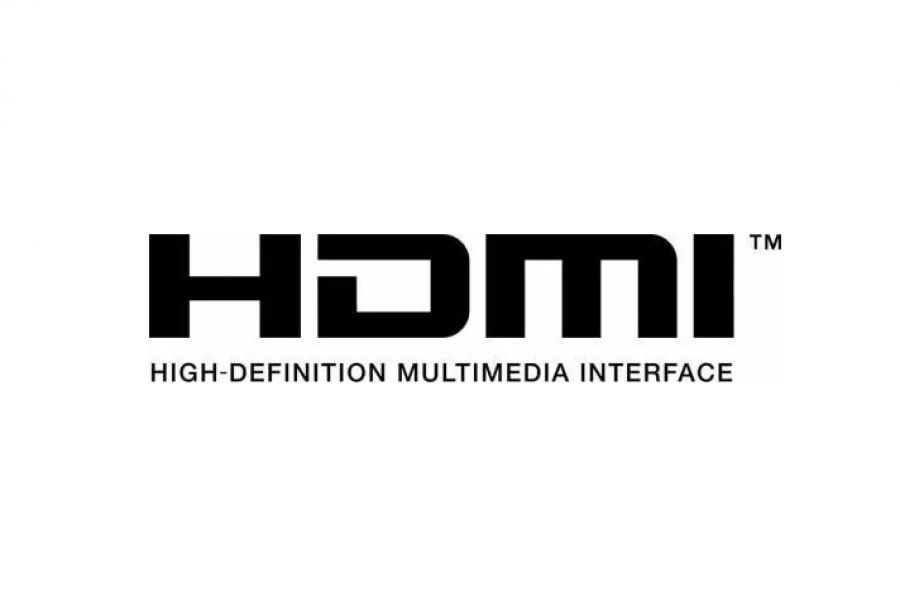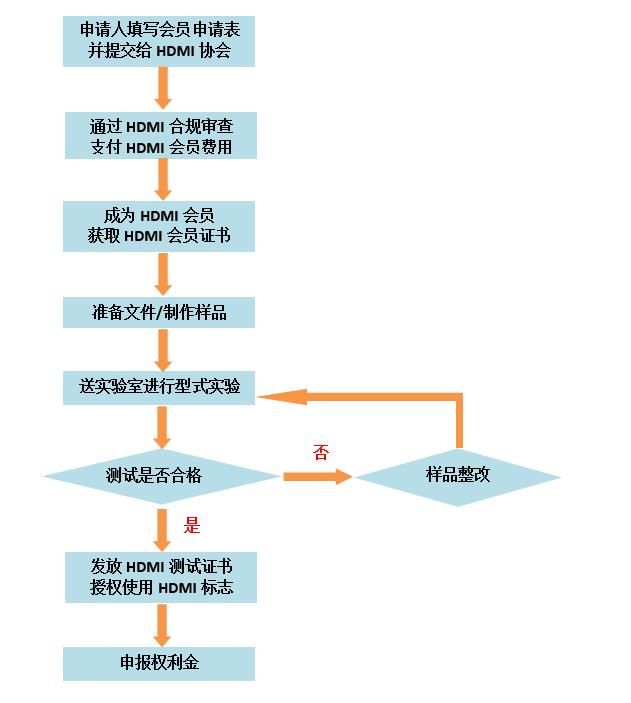HDMI Certification

Details
I. Introduction to Certification
HDMI (High Definition Multimedia Interface) is a digital video/audio interface technology. In April 2002, seven companies, namely Hitachi, Panasonic, Philips, Silicon Image, SONY, Thomson and Toshiba, jointly established the HDMI High-Definition Multimedia Interface Organization, namely the HDMI Association. On December 9 of the same year, the HDMI 1.0 standard was officially released, marking the official entry of HDMI technology into the historical stage. It has been updated to version 2.1 by today.
Ii. Certification Advantages
The maximum data transmission speed of HDMI is 5Gbps. It not only meets the resolution of 1080P, but also supports digital Audio formats such as DVD Audio. It supports the transmission of 8-channel 96kHz or stereo 192kHz digital audio, and can simultaneously transmit uncompressed audio signals and video signals.
HDMI also features "plug and play". The signal source and the display device will automatically "negotiate" and automatically select the most suitable video/audio format.
Compared with traditional interfaces, HDMI interfaces are smaller in size. Just one HDMI cable can replace up to 13 analog transmission lines, simplifying wiring and providing the highest quality audio and video experience. So it is widely adopted by all kinds of people!
Iii. Common Types of HDMI Interfaces

The commonly used HDMI interfaces include four types: A, C, D, and E
AType: It has a total of 29 pins and is currently the most commonly used type, widely adopted in televisions, monitors, computers, set-top boxes, etc
CType: Commonly known as MiniHDMI, it has 19 pins and can be regarded as a miniaturized version of HDMIAtype, but the pin definitions have changed. It is mainly used in portable devices, such as DV cameras, digital cameras, portable multimedia players, etc
DType: Commonly known as microHDMI, it maintains the 19-pin standard of hdmi. However, its size is similar to that of a mini USB interface, measuring 2.8mm×6.4mm, which is much smaller than that of a Mini HDMI (2.42mm×10.42mm). It is mainly used in some small mobile devices, such as mobile phones, MP4 players, etc
Iv. Why do we need to obtain HDMI certification?
HDMI can transmit uncompressed high-fidelity signals over a single cable. As HDMI data transfer is approximately 5Gbps, the requirements for transmission quality are quite strict. Therefore, HDMI certification ensures the communication quality of the product. Products that have obtained legal HDMI certification can guarantee the quality and standardization of the transmitted signal.
In addition, HDMI is a patented compulsory certification. If a customer uses HDMI technology (using the HDMI interface), it means that the product has adopted the patented technology of HDMI. They need to apply for certification authorization from the HDMI Association before using it; otherwise, it will be regarded as an infringement. This is also the reason why many customers are detained by customs.
V. HDMI Certification Process
Step 1: Apply for an HDMI membership
Step 2: Sample testing
Step 3: Declare the quarterly royalty


 Scan WeChat to chat
Scan WeChat to chat